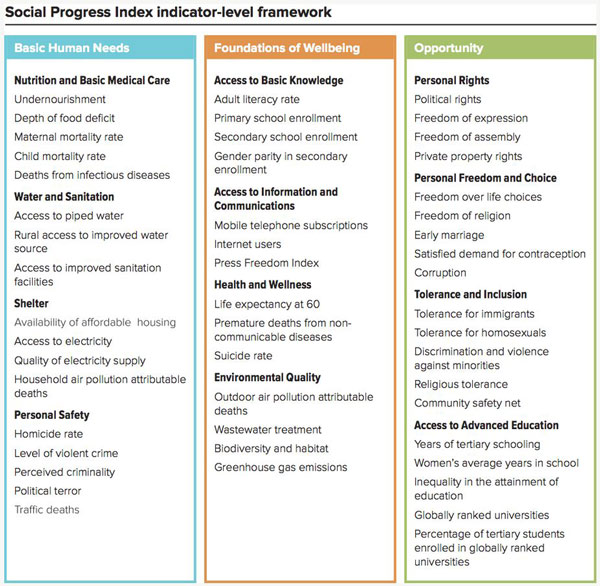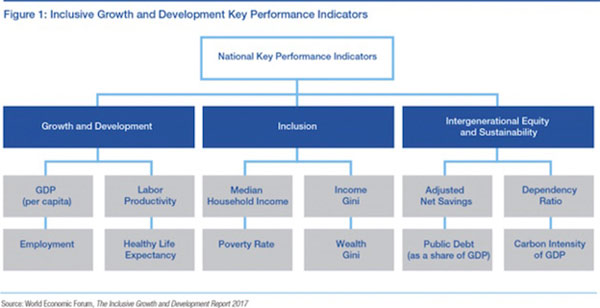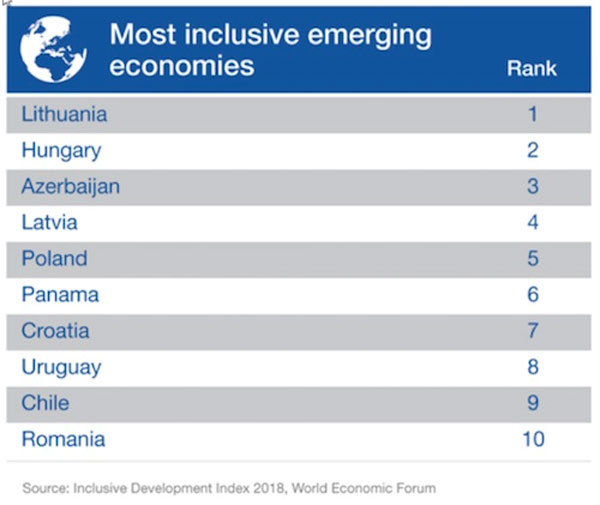GDP is an historical artifact from an industrial economy that doesn’t really serve its purpose anymore, at least in the US.
GDP worked well in the post-World War II era when the US economy thrived by making material goods: trucks, cars, machinery, appliances, airplanes, houses, skyscrapers, etc. Output is easy to measure for such goods, as are the inputs required to produce them—mainly large factories and raw materials.
But the problem is that today’s economy isn’t like that.
GDP Ignores Innovation
In the US, manufacturing is still 35% of GDP, but fewer than 9% of US workers are actually involved in that manufacturing.
We are producing more stuff than ever, but we are doing it with far fewer people. And now we produce huge quantities of largely intangible goods: computer software, movies, music, and so on. The productive capacity often exists inside some smart human’s brain.
How do you measure that?
Think also of how much more productive technology has made us. We could list thousands of little tasks that used to take hours but now require only seconds. Add up all that time saved, then scale it over hundreds of millions of workers.
The impact on productivity is mind-boggling. Does it show up in GDP? Not really. It may even reduce GDP, since we no longer consume as much fuel, printing, library space, etc.
Going back to the old ways might improve the economic numbers, but would it help the economy? No way. Yet we measure economic growth as if it would.
That’s a problem.
We Expect GPD to Measure What It Can’t
I could go on at length about the problems with GDP, but I’ve done that before. Read “GDP: A Brief but Affectionate History” and “Weapons of Economic Misdirection” for the gory details.
A key question: Is GDP completely outmoded, or does it just miss some things?
If the latter, then maybe it just needs some tweaking instead of total replacement. The wickedly brilliant Diane Coyle, a University of Manchester economist, has been working on this issue for years.
She proposed in a recent paper with Benjamin Mitra-Kahn, a series of incremental changes that should help: better measurement of intangible goods, an adjustment based on income distribution, and some other relatively simple changes.
Distribution effects are a problem whenever we look at GDP per capita, as we commonly do when we compare nations. Almost everywhere, income is far more concentrated at the top than it used to be, but the effect varies a lot depending on where you are.
It is entirely possible, indeed it is likely in some places, for per-capita GDP to rise sharply while most of the population sees no change in its living standards or economic health. An adjustment to compensate for this inequity is an excellent idea.
That point brings up a thornier problem, though. In whatever way we measure it, is “growth” the right thing to watch? Does it really tell us what we think it does? We look at GDP growth and assume a country that has it is prospering. We think everyone who lives there must be thrilled. Often, they have little reason to be.
The assumption works in the other direction, too.
If GDP is flat or falling, we see a recession and react accordingly. That is particularly the case with political leaders and central bankers, who then introduce policies to solve the perceived problem. These policies can be damaging if the problem is less serious than central bankers think it is.
This may be happening in the US right now.
We’re asking GDP to do something it can’t. What we want is a benchmark of economic progress. Are a country and its people generally better off economically than they were last year or five years ago? If so, by how much?
Then we can start to know which policies might help and which might hinder progress. Business owners would be able to make better decisions, and ultimately everyone should feel the benefits.
In Search of New Measures
Economists have been proposing new measures.
In 2013, the Skoll World Forum launched the Social Progress Index, defined as “the capacity of a society to meet the basic human needs of its citizens, establish the building blocks that allow citizens and communities to enhance and sustain the quality of their lives, and create the conditions for all individuals to reach their full potential.”

Source: socialprogressindex.com
Some of the indicators they want to track, such as “religious tolerance,” could be hard to pin down. But the creators of the index are on the right track in that they are attempting to measure well-being.
Another effort appeared in a 2010 book by economists Joseph Stiglitz, Amartya Sen, and Jean-Paul Fitoussi, called Mis-Measuring Our Lives: Why GDP Doesn’t Add Up.
Their suggestion is to continue using GDP but add other data points to clarify it. They would use things like life expectancy, debt levels, educational achievement, and other social progress metrics.
The World Economic Forum, which had its annual shindig in Davos last week, took another stab at this problem with its “Inclusive Development Index.” It too supplements GDP with other progress indicators.

Source: World Economic Forum, The Inclusive Growth and Development Report 2017
The WEF paper says GDP is fine as a top-level measure, but growth is a means to an end, namely better living standards. Only by looking at those living standards can we know if GDP growth is accomplishing what it should.
By WEF standards, the “most inclusive” advanced economies are mostly European. The US and Canada are not in the top 10. The most inclusive emerging economies list is more interesting. Azerbaijan? Really?

Lithuania leads the list, and from what I’ve heard, it probably deserves to do so. The other countries on the list look like a strange mix at first but make more sense after some thought.
Several live in the shadow of much-larger neighbors, so maybe they are more willing to innovate. This list would be a good starting point if you have money to deploy in emerging markets.
That’s a good thought: Countries that are growing in a fair, sustainable way should attract investment. Often they don’t because investors want quick profits.
GDP Growth Is Smoke and Mirrors
So while on the surface 4.4% nominal GDP growth and 2.6% real growth look pretty good, when you really begin to inspect the engine of growth, you find less under the hood.
The velocity of money keeps falling. Our demographics mean that we are not adding workers, and the latest immigration proposal would reduce the number of immigrants and potential workers.
And while I am all for allowing the so-called Dreamers to be allowed to stay in this country—the only home country they have known—we do need to be a lot more strategic about allowing potential workers into this country.
After all, GDP is simply the number of workers times productivity. With the number of workers tailing off and with productivity as weak as it has been, the sugar high that the economy has been on is going to wear off.
Join hundreds of thousands of other readers of Thoughts from the Frontline
Sharp macroeconomic analysis, big market calls, and shrewd predictions are all in a week’s work for visionary thinker and acclaimed financial expert John Mauldin. Since 2001, investors have turned to his Thoughts from the Frontline to be informed about what’s really going on in the economy. Join hundreds of thousands of readers, and get it free in your inbox every week.



